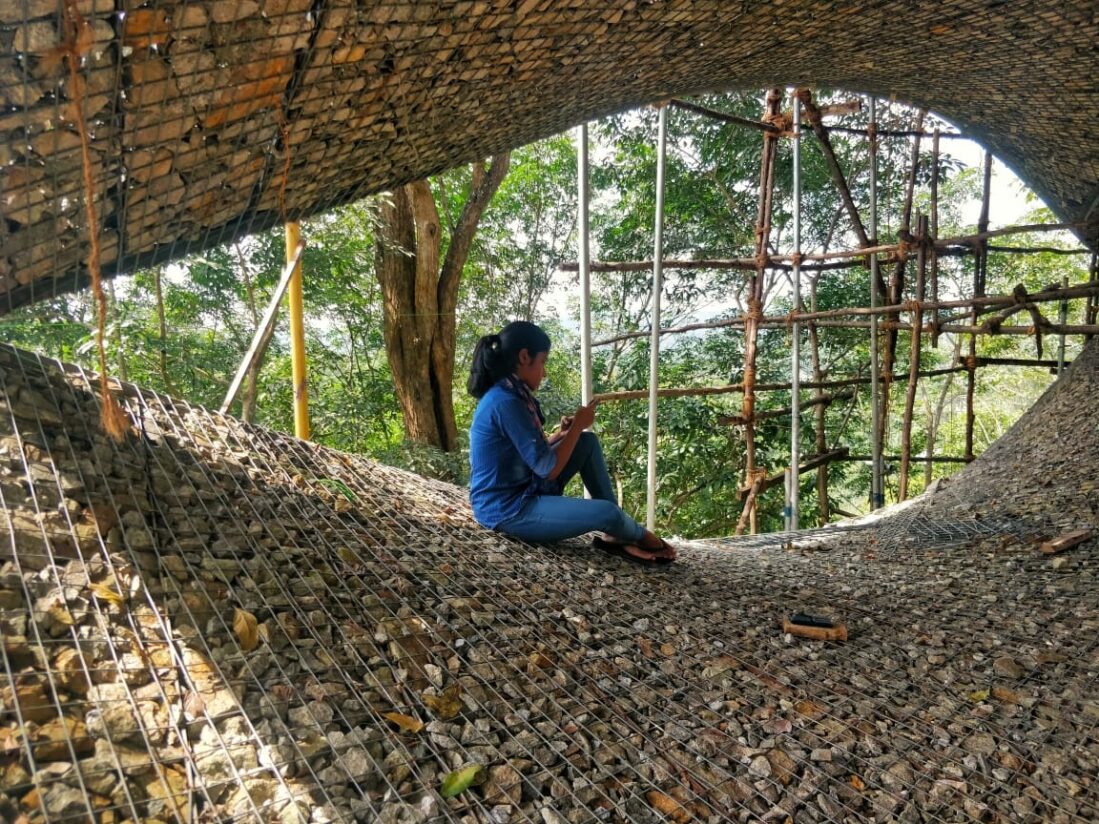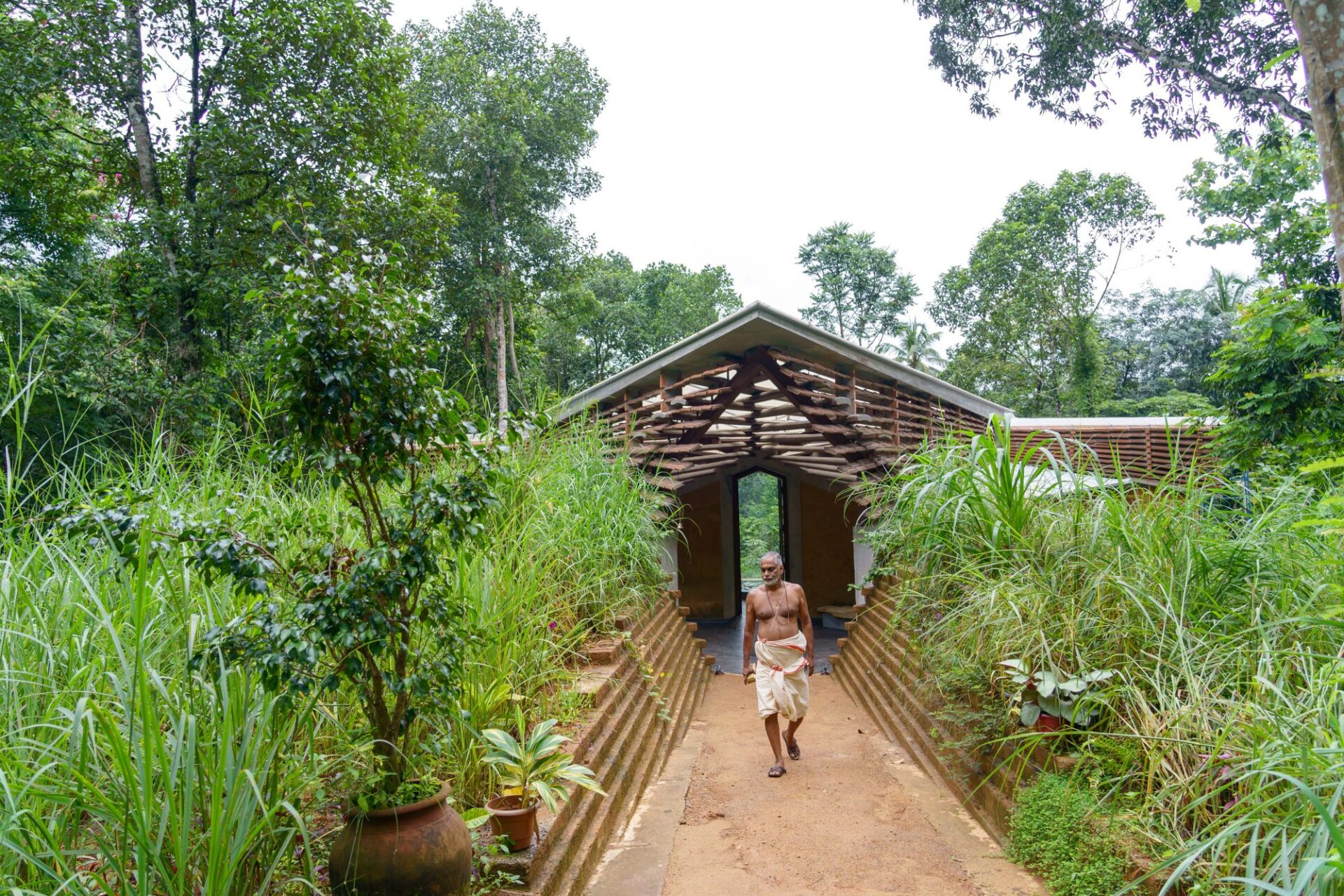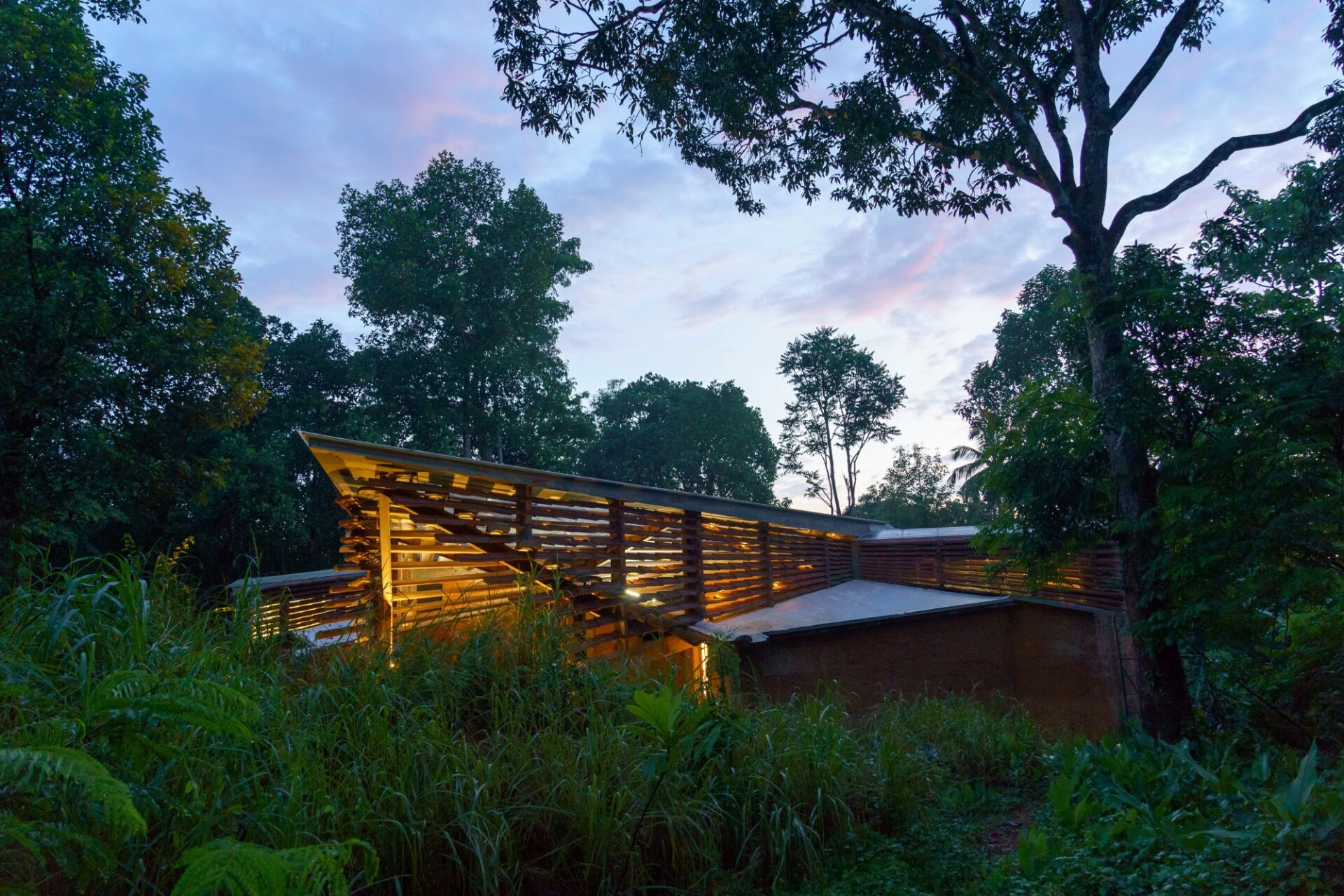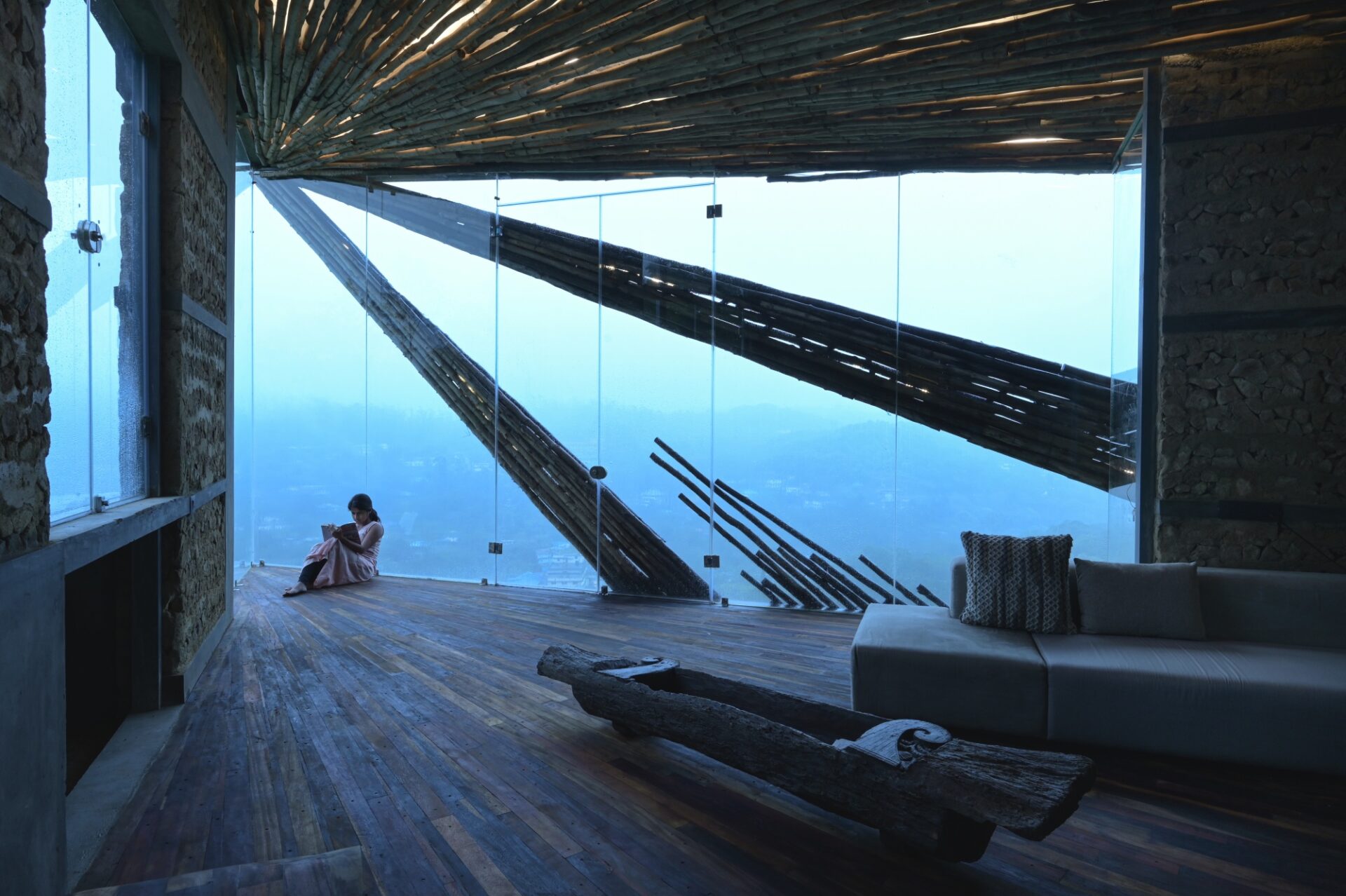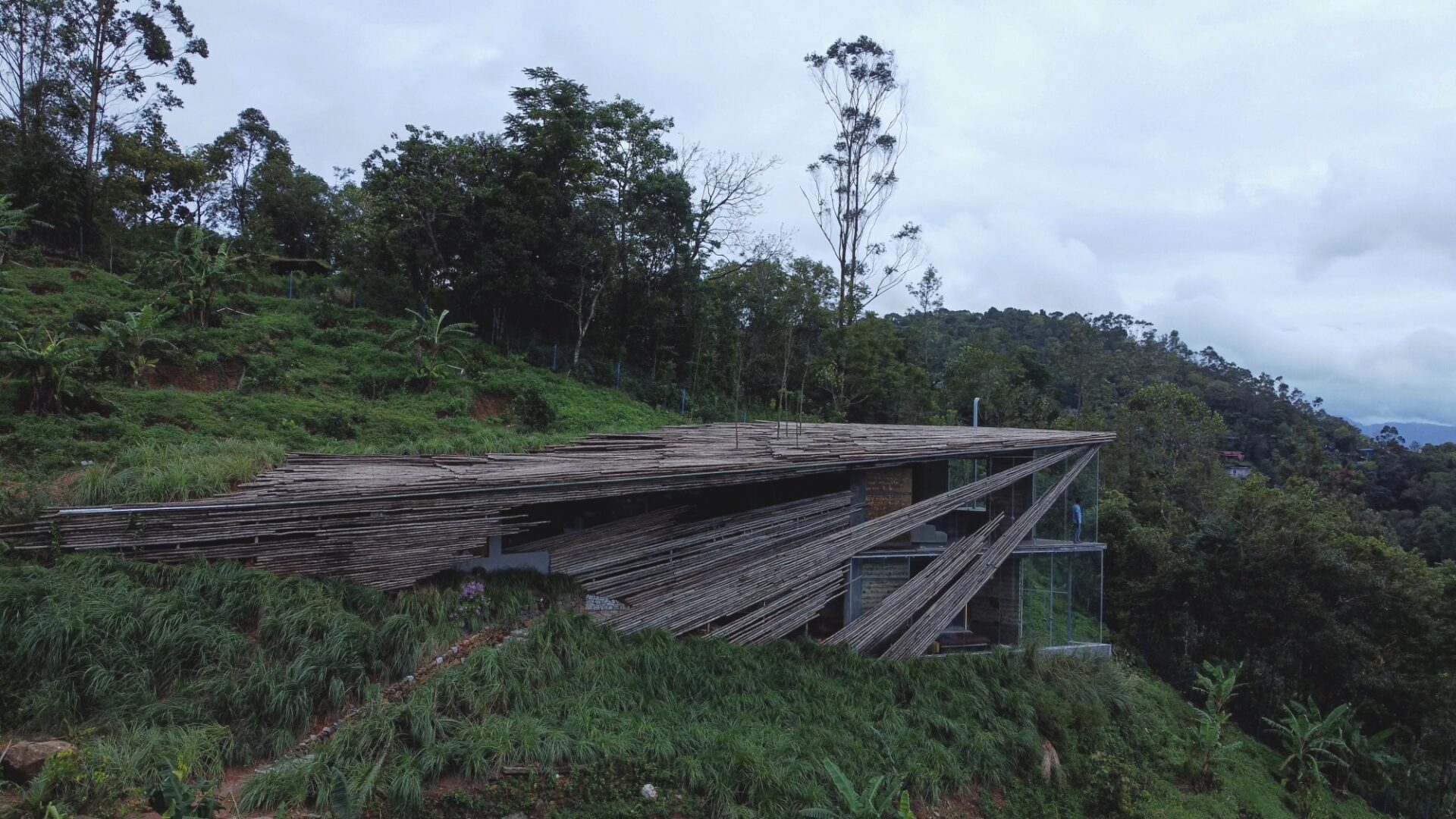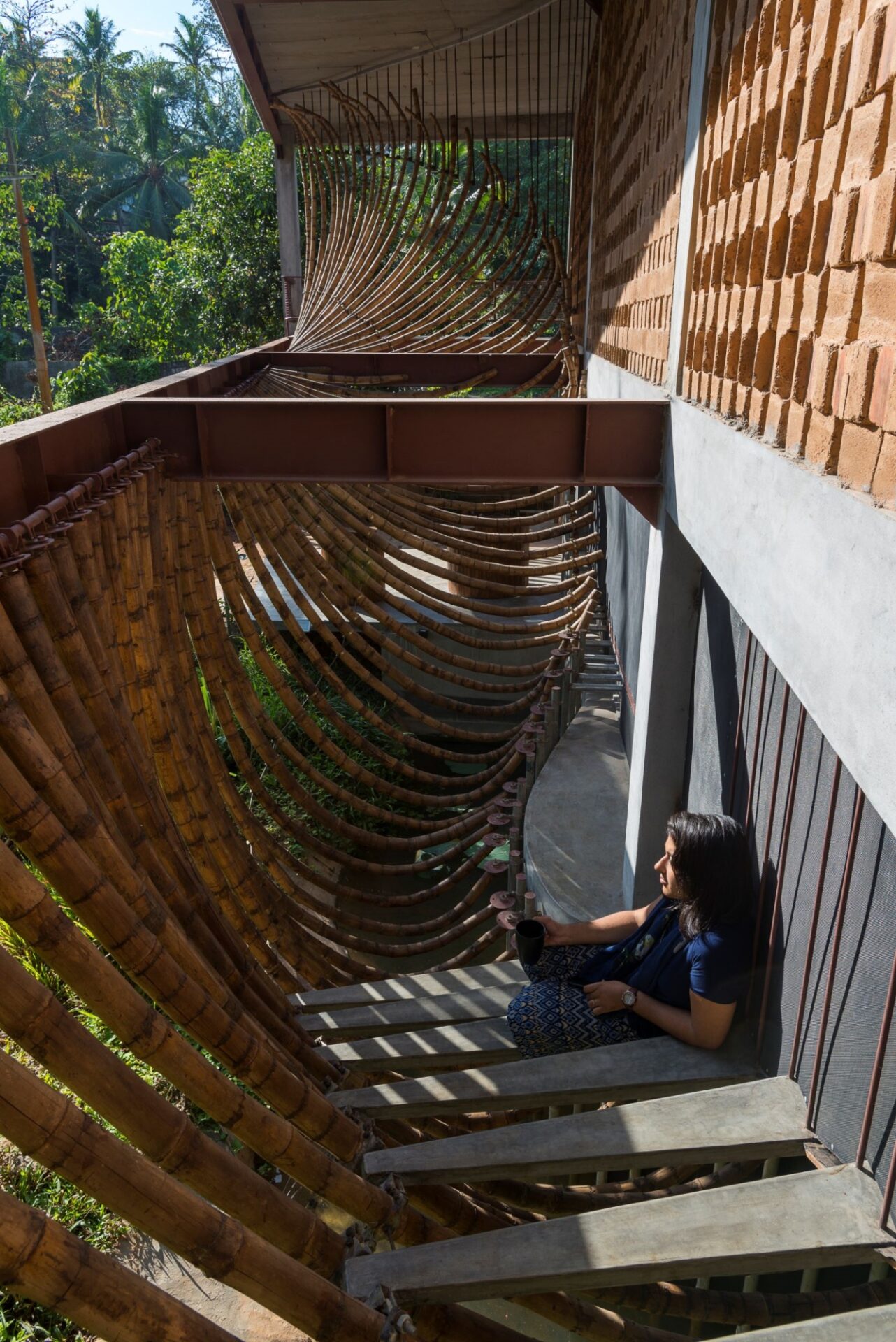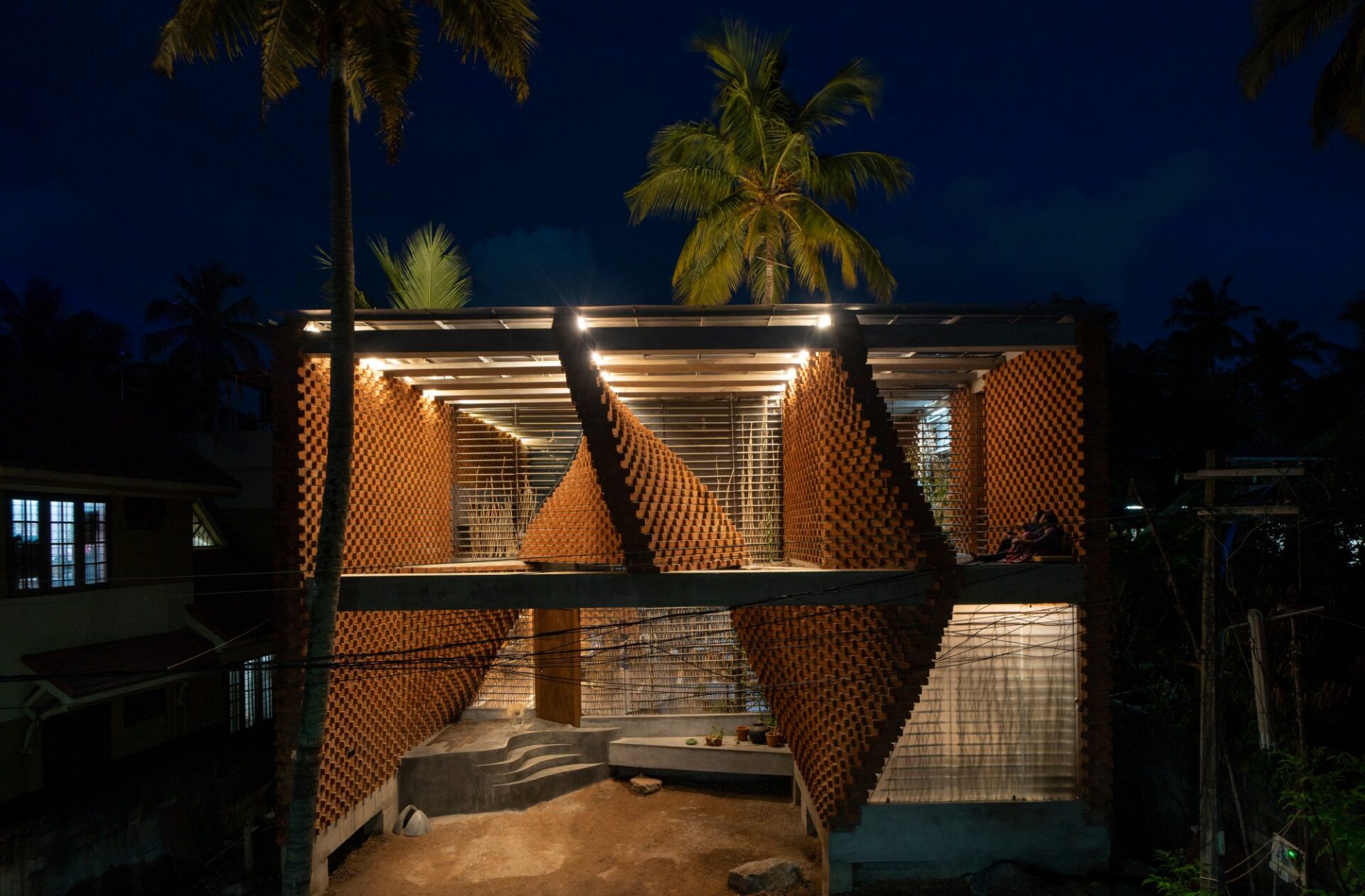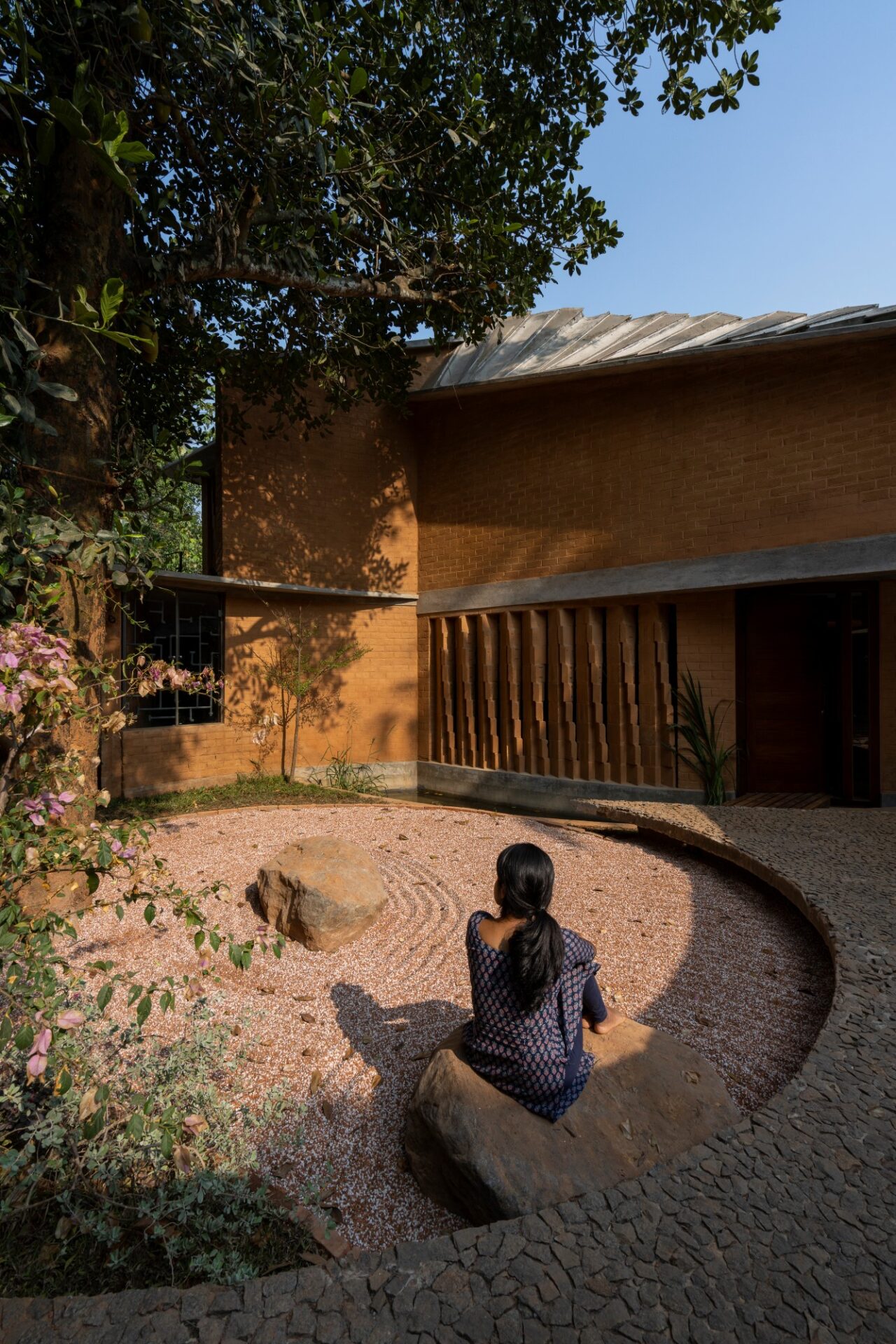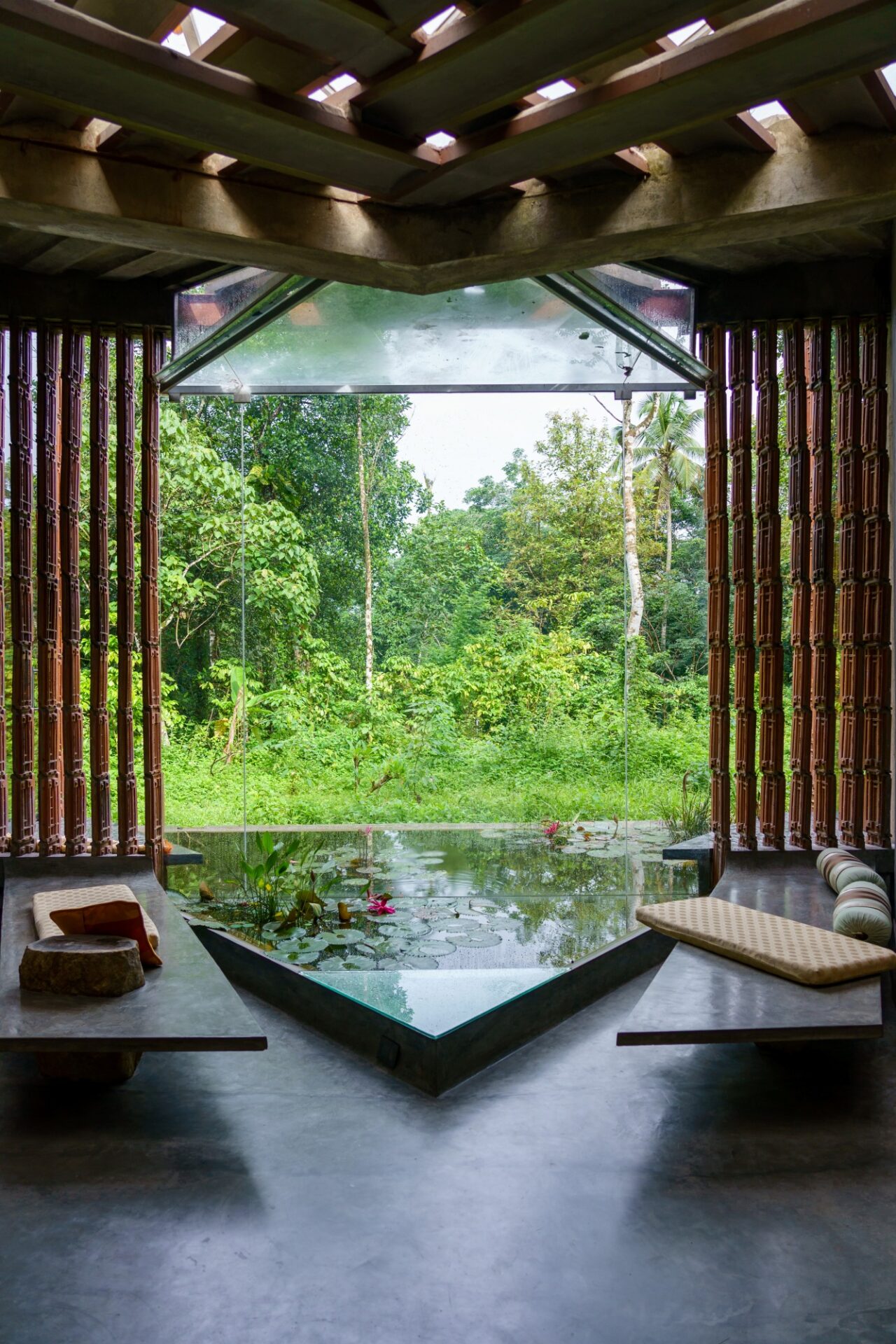Dreaming of a Green Horizon
For someone who was disillusioned and on the verge of forsaking architecture, Vinu Daniel, owner of the architectural firm Wallmakers, has certainly come a long way in his practice, that has now earned him global recognition. His laudable pursuit to minimise disruption to the environment helped him evolve his own form of architecture that embraces natural green habitats extending to infinity and won him the 2022 Royal Academy Dorfman Award which celebrates practices that highlight the future potential of architecture. By Sindhu Nair
Wallmakers, headed by Vinu Daniel, was selected as winner of the Royal Academy Dorfman Award by judges who were impressed by Daniel’s energy, creativity, and willingness to take risks while achieving sustainable buildings that exist harmoniously within the landscapes and ecologies in which they are erected. Wallmakers was selected from a shortlist of four international practices by a jury assembled at the Royal Academy on 15 September 2022.
The international jury for the Royal Academy Dorfman Award was chaired by Farshid Moussavi RA and included Farrokh Derakhshani, Director of the Aga Khan Award for Architecture. And thus, a small firm down south in Kerala, gets global acclaim! Most interesting is the comment from Moussavi on Daniel’s willingness to improvise and take the risky route of exploring unprecedented interventions, while adamant in his insistence of treading lightly on the planet.
“There is a strong sense that this is an architect who is just getting going and we will all follow Wallmakers’ career with the keenest interest,” said the Chair of the Award.

St. George Orthodox church at Mattanchery was the first church of Christians in Kerala, rebuilt and reimagined by Wallmakers in 2020.
SCALE got on a Zoom call with the architect whose practice might be called Wallmakers, but the team is so unrestricted by four walls that they don’t even have an office from where they operate; instead, they make their sites their haunts.
“I do not have an office or a house. It was not a planned approach but happened organically since we believe that we should not restrict ourselves to certain demographics as our kind of architecture needed to be shared, spread and practised across states in India and then later out of the country as well,” says Daniel, “We started spreading wings and then decided that it did not make sense to have an office space, pay the rent on it when we had to be at the site, training the workforce for the particular kind of buildings we design.”
A decision taken for purely practical purposes, proved to be incredibly effective for Daniels’ team of around 100, all highly skilled workmen. And this strategy seemed to have worked because Wallmakers are now building across the Western belt, from Karnataka to Maharashtra, to New Delhi.
So, what is Daniel’s architecture or the type of buildings he wants to build?
“We, at Wallmakers have devoted ourselves to the cause of using mud and waste as the chief components, to make structures that are both, utilitarian and alluring,” is the prompt answer.
But what if opportunities to build other bigger projects come up? Will the ideals still hold good, we enquire?
Daniel then takes us down memory lane to that stage in his life when he was on the verge of giving up on the subject. “Architecture generally destroys the habitat of many living creature to make four walls for a family of humans.”
For someone who grew up in Dubai, “within a concrete jungle” as he calls it, coming back to the abundant green fields of Kerala on his annual holidays was a joy. He soon noticed the widening of city limits and lessening of green belts, which alarmed him, but fascinated and was accepted by those who resided here as a sign of modernisation.
“I was short-sighted from six years of age and wore contact lenses from then on. I remember the doctor telling me the reason why a large number of children at a young age developed this malfunction. It was because their vision was blocked and they could not see into the horizons. They only saw boundaries. For me, this statement shaped how I looked at buildings,” he says.
“Coming to Kerala, to see the lush fields extending into infinity, even if it was with the help of spectacles,” was a joy beyond comprehension,” says Daniel.
“To see views cordoned off by silly modern infatuations was a crime that was perpetuated by greed rather than necessity,” says Daniel passionately, giving us a glimpse into his strong, almost obsessive, love for nature.
Thus started Daniels’ pursuit of a tribe of nature-loving enthusiasts and then in 2006, a more desperate hunt for takers for his ideology. It eventually led to the establishment of Wallmakers’ practice and by 2022 they have a strong fan following and now, the fresh feather on the cap via this global recognition.
“We have always been blessed by supporters, be it in the media or among those keenly following these kinds of practices. They have always put the focus on us and hence we could explain our ideology to the community to help them understand the sustainability in living and practising the culture of using locally available materials,” he says. He particularly mentions Manorama Veedu magazine and Sona the Editor who believed in his ideology and supported them initially.
Architecture is Sin
But Daniel was not thinking of a huge thriving practice, or success that “normal” architects pursue. “If five people believed in my approach, I was happy,” he says, which hints at his way of living, of the quest for a long-term goal not a career, of only building what was of utmost necessity.
This lack of hunger for more work is because ultimately Daniel does not believe in flocking the earth with more built form. Daniel believes that, “Architecture is a sin. While we build a home for ourselves, we drive out others of their natural habitat, whether it is flora or fauna.”
With this strong belief and an intense dislike for the profession of building, Daniel has carved out his unique form of practice, one that fights all the commercial pulls of the industry and lets in all the natural forces of earth, by not throwing out the flora and fauna but indulging in a tap dance around them through his structures that are art forms sculpted from earth or the surroundings.
At this stage, it would be pertinent to throw light on one of his projects, which translates quite literally into ‘a dance around the clouds’ — The Ledge in Peeremedu. Perched on the edge of a mountain, The Ledge is a residence designed based on a dream sequence. The building has been designed as a shard that seems to be protruding as an extension of the mountain into the air, a building that can be mistaken for a ledge, a natural phenomenon on the cliff, a residence in disguise.
Which brings us to the question, how do Daniel and his team arrive at the structure, most of them pure poetry, almost hidden amongst its environment or taking the shape of the surroundings, hidden in the lushness of the greens?
“When we see a site, we are in the pursuit of a dream, not a building,” answers Daniel. “My thought process starts with taking the light inside, along with simple, natural things that make the dream come alive.”
One of Daniels’ projects, the Pirouette House, used fired bricks as an ode to the stellar practice of Laurie Baker and is a dramatic space play with walls that seem to come alive and pirouettes around.
On the quintessential question asked to every architect about the importance of form versus function, Daniel echoes other architects in giving form and function their due, but he also has a story to reiterate, “Camouflage Architecture is something we are trying to do now. The forms are almost hidden, merging with the landscape. Two of our projects, The Ledge and Chuzhi represent this type of architecture.”
“We believe that human intervention should not be too loud,” stresses Daniel.
He ends with a beautiful example of the futility of the built form, “I took a client to a site in Hosur and asked him to look around. Everything ugly was manmade and everything beautiful was nature.”
Short Snippets
Your own favourite works
Chirath and Valsala Cottage; these were pivotal works for us.
Guru in Architecture
“One person who was crucial in my continuing with architecture was Laurie Baker, whom I had a chance to meet. What he told me meant something to me and was pivotal in shaping my career in architecture. I also cannot forget the impact Satprem Maïni, the director, executive and soul of the Auroville Earth Institute in Pondicherry for the UNDP (United Nations Development Programme) had on my interaction with mud architecture.”
Influenced by
Louis Khan, Antoni Gaudi, B V Doshi and Laurie Baker
If not an Architect, you would be…
A street singer


